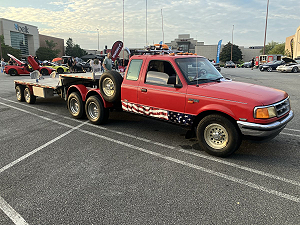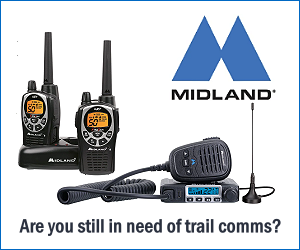- Joined
- Feb 28, 2001
- Messages
- 8,734
- Reaction score
- 5,411
- Location
- Dayton Oregon
- Vehicle Year
- 1990, 1997
- Make / Model
- Ford
- Engine Type
- 2.3 (4 Cylinder)
- Engine Size
- 2.3 Turbo
- Transmission
- Manual
- 2WD / 4WD
- 4WD
- Total Lift
- 6
- Tire Size
- 35"
Ok, Some might remember my shop build from a while ago since it's been a 2 year project so far, but it's close...
I'm finally close, I have a new power service going to the shop that has a new 320A service with meter at the shop with two 200A mains feeding the house and shop, and a new 200A panel in the shop. The last thing before the final inspection is to get a few circuits wired in "correctly"...
I try to do things right but I am NOT going to buy a full assortment of $55+ GFI breakers to go to code when normal breakers are $6-20... I just bought a 20A GFI single pole breaker to start with the light circuit, I'll probably get another tomorrow to add a couple outlets, I just wanted to know it was the right breaker before I spent the $$.
My main question is on a secondary structure what the requirements are for wiring without enclosed walls... I would prefer to just wire with PEX, but it will be exposed. I know it shouldn't be under 18" high.
If PEX isn't going to pass inspection I do have a roll of MC, it looks like it's harder to deal with, not to mention it's more expensive (I think I only got it for like $80?, it's $200 now), if I gotta I gotta, boxes are more expensive since you have to use metal...
When I was in Lowes a couple hours ago I got stuff prepared to run a few circuits with MC... I don't think my county is too strict.
I'm finally close, I have a new power service going to the shop that has a new 320A service with meter at the shop with two 200A mains feeding the house and shop, and a new 200A panel in the shop. The last thing before the final inspection is to get a few circuits wired in "correctly"...
I try to do things right but I am NOT going to buy a full assortment of $55+ GFI breakers to go to code when normal breakers are $6-20... I just bought a 20A GFI single pole breaker to start with the light circuit, I'll probably get another tomorrow to add a couple outlets, I just wanted to know it was the right breaker before I spent the $$.
My main question is on a secondary structure what the requirements are for wiring without enclosed walls... I would prefer to just wire with PEX, but it will be exposed. I know it shouldn't be under 18" high.
If PEX isn't going to pass inspection I do have a roll of MC, it looks like it's harder to deal with, not to mention it's more expensive (I think I only got it for like $80?, it's $200 now), if I gotta I gotta, boxes are more expensive since you have to use metal...
When I was in Lowes a couple hours ago I got stuff prepared to run a few circuits with MC... I don't think my county is too strict.














